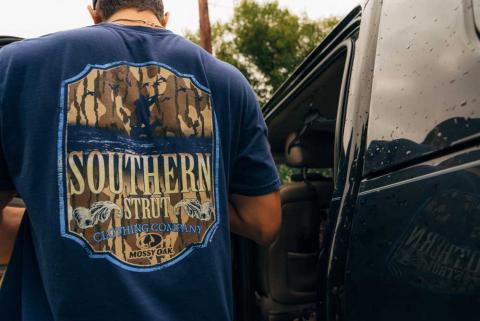Heath Wood
Two days after a winter storm that involved several inches of snow and freezing rain, my wife and I made the slow trek on the rural roads leading to our hunting destination for the opening night of Missouri's legal portion of coyote hunting with artificial lights.
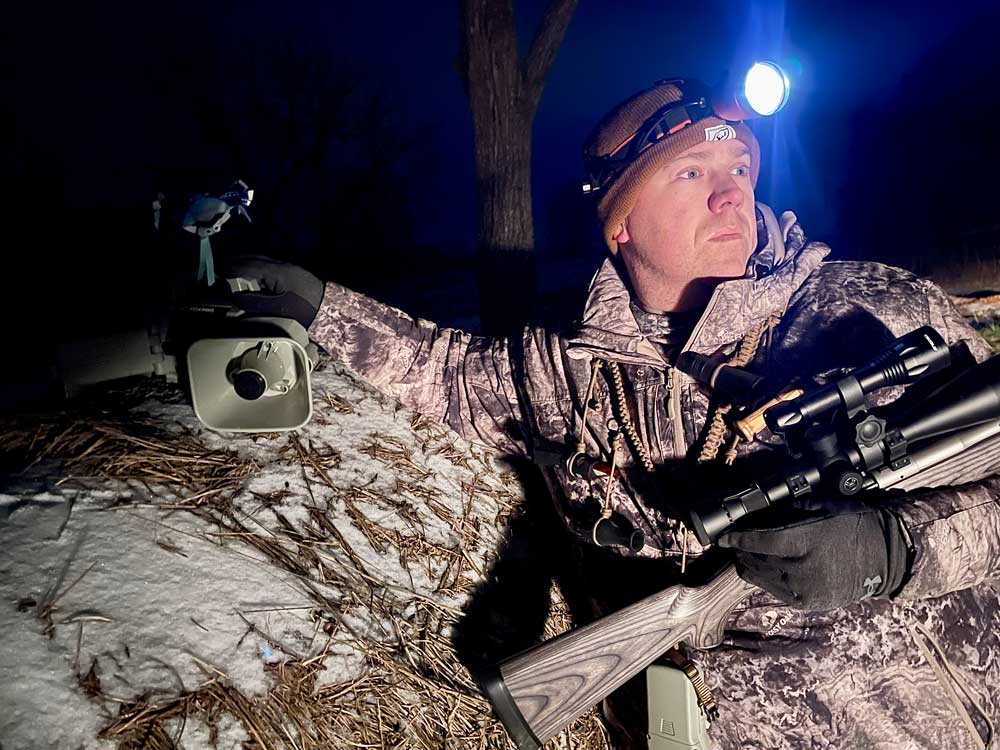
As the tires on our four-wheel drive truck crunched and skidded over the refrozen snow-covered grounds, I knew we were already making extensive noise before the hunt began. After we walked enough distance to form a comfortable gap from the dirt road, we set up our FoxPro XWave electronic call with the speakers facing a small wood lot that had consistently been home to a small pack of coyotes. Once the call was in place, we sat close to a large oak tree, then silently waited 20 minutes before making our first call.
After concluding we had waited long enough for the area to quiet after our loud arrival on the frozen snow, I began with a female lone howl. A few seconds into the first howl, the resident pack of coyotes responded by yipping and howling a mere 150 yards from within the designated patch of timber where I assumed they would be located. As with a regular night hunting set up in early February, I paused several minutes, then continued my calling sequence by playing the sound of a distressed rabbit. Feeling confident with our setup, I whispered to my wife to be ready as she scanned from left to right with our light. As the distress sounds echoed throughout the large pasture and into the timber, two deer pranced their way across the field and out of sight. Sadly, that was the only sign of wildlife we encountered on that specific calling stand. After 30 minutes of no luck getting the nearby coyotes to respond, we decided to move on to the next stand in hopes of better success.
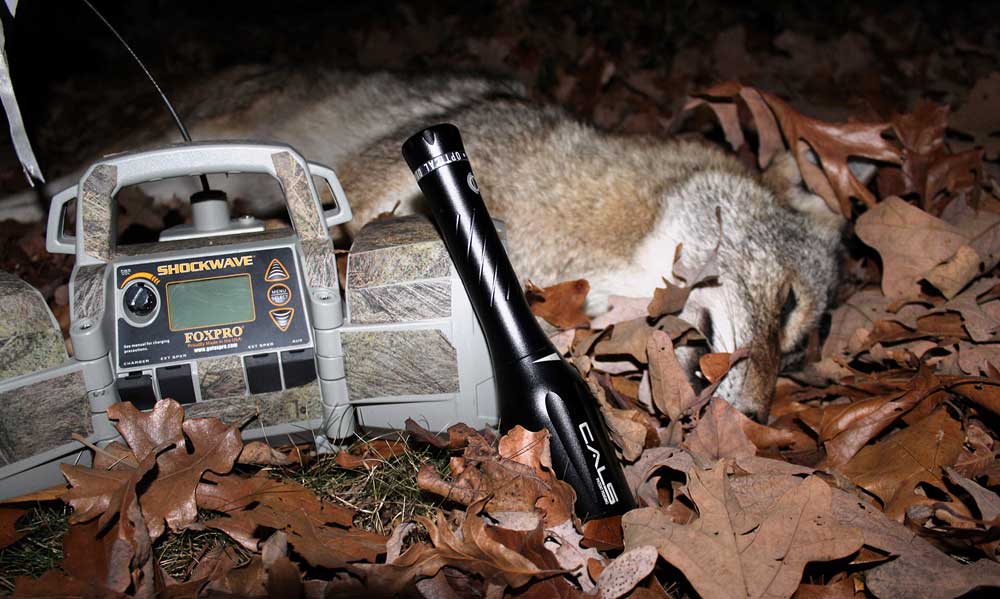
Why Using Coyote Vocals Works
On our first stand, we noted the coyotes being quick to respond with yipping and howling, which is typical for nighttime hunting. After darkness has fallen, coyotes typically howl and are the most vocal. Add darkness with a cold early February, when coyotes are beginning to pair up for breeding purposes, and it creates the perfect recipe for increased vocalizations.
After the sun has gone down, coyotes often split apart and begin their hunting attempts themselves. Before they do, the pack will resemble that of football players breaking the huddle before running their next play by sounding off with small bursts of yips and howls that sound like the entire pack is chirping with excitement before the hunt. Throughout the night, howls are made to communicate with other coyotes and for other social purposes. During the breeding season, coyote vocals increase as they search for a mate and defend their territories amongst each other.
READ NEXT: Hunting the Coyote Rut
With all the signs leading to a successful night for hunting and coyotes responding close by, why didn’t we have success on our first stand when calling?
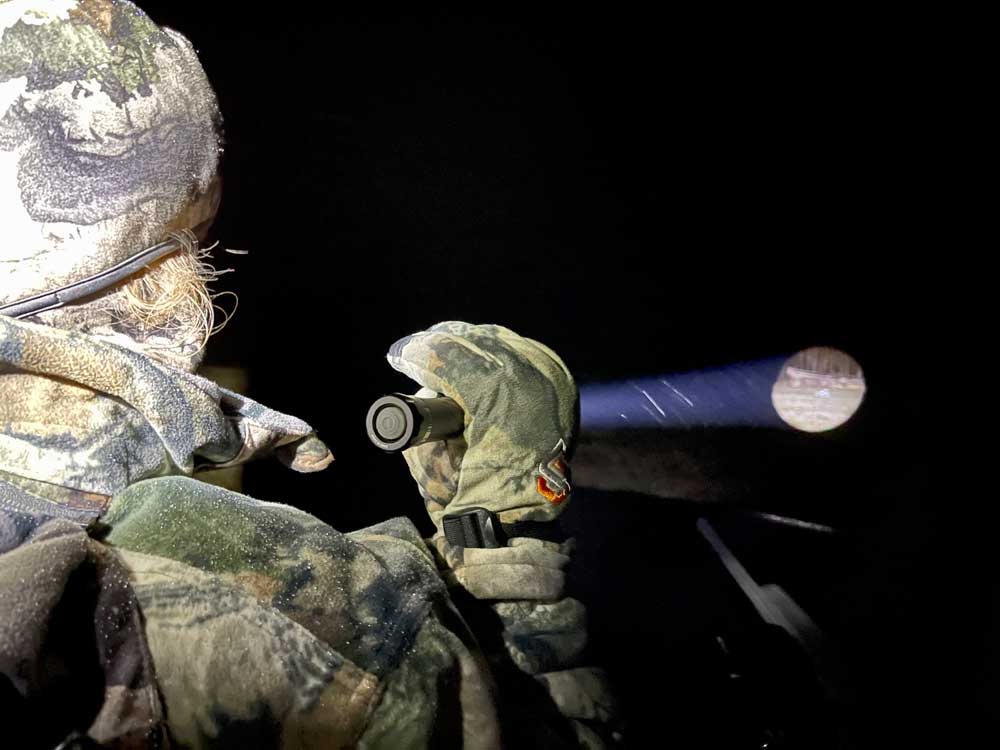
Quiet Things Down
Noticeably, after the sun goes down, it seems as if everything rests from a busy day and is calm throughout the night. The same goes when predator hunting at night. The wind typically calms down, all the sounds from our daily world soften, and the night becomes much quieter when out in the wild. When normal sounds soften, and the wind is barely a breeze, sound carries much farther. This can be good and bad when predator hunting.
On our night hunt, we were greeted with bad luck when the remains of Mother Nature’s recent accumulated precipitation created a loud signal that someone was in the area. With the coyotes being much closer than we anticipated, they did not feel safe responding to our calling by coming closer, even though they did howl back at our sounds. To cause even more doubt, I noticed later in the hunt that I had been playing the sounds on my FoxPro much louder than needed. In the cold, still air, my sound was probably blasting into the timber, resulting in the nearby coyotes remaining hidden from our calling attempts.
When night hunting coyotes, the hunter must remember that sound carries much farther, and the need to tone down the volume is crucial. To prevent over-calling at the beginning of a calling stand, the hunter should begin by using a diaphragm-style howler such as the ESH Custom Calls Coyote Howler Mouth Call. The double-reed call produces realistic coyote vocalizations such as howls, yips, and barks and can be produced at a lower volume using less air pressure. If an electronic call is preferred when howling, beginning at a lower volume is vital to prevent spooking coyotes at a close distance. If nothing responds, then increase the volume and try again.
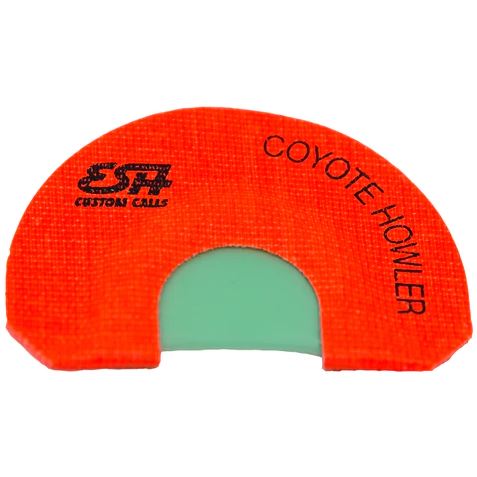
For vocalizations that tend to work best to bring nighttime coyotes into close range, the hunter should learn how to use the diaphragm or the electronic call. With either call, hunters can create the sounds of a soft subtle howl, such as a lone howl that works excellent for locating coyotes and signaling other coyotes that there is company near their designated territory to spark a coyote to investigate. Other vocals to learn should be integration howls, challenge howls, female submissive howls, and the yipping sounds that females make while in heat and looking for a male coyote to pair with to breed.
After a hunter learns to use the massive sound library of coyote vocalizations, they can utilize those sounds when using the usual prey in distress calls and become a more versatile predator hunter. The versatility will result in a higher response rate, even with the tough-to-call coyotes that have been hunted in the past, creating a more successful hunter.
















